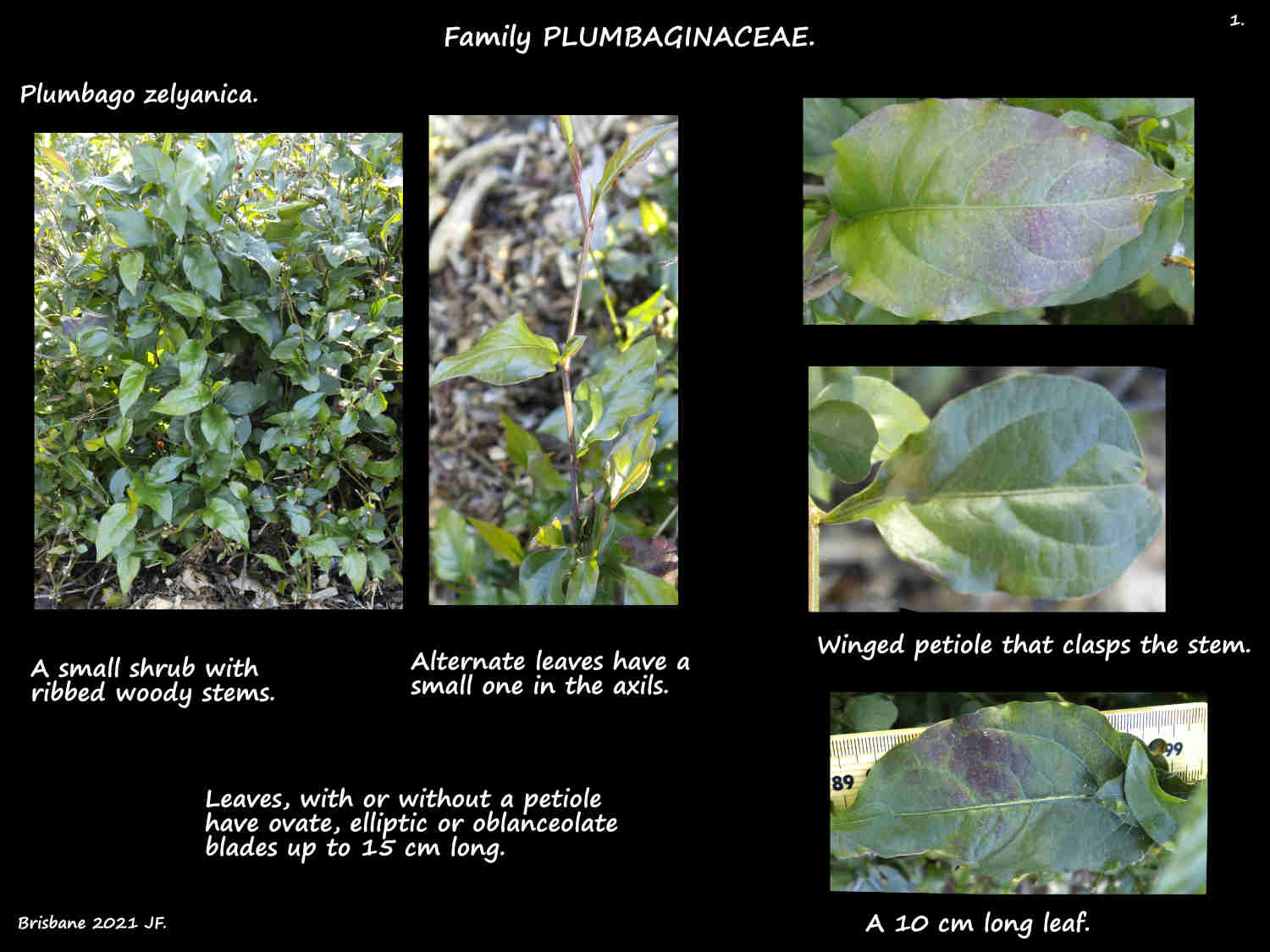Plumbago zeylanica.
Wild Plumbago is native to northern Australia and S. E. Asia.
They can be seen as a small herbaceous plant, a small woody shrub or a scrambling woody vine (liana).
Shrubs are up to 1 m high and vine stems can be 3 m or more in length.
The erect, prostrate or climbing stems are branched.
They have no hairs but older stems are longitudinally ridged and may be dotted with small white chalk glands.
The alternate leaves are up to 10 or 15 cm long and 4 to 7 cm wide.
The blade can be ovate, elliptic or oblanceolate.
The pointed tip has a mucro (small abrupt point).
The rounded to wedge-shaped base tapers onto the stem or a short petiole.
The base of the winged petiole or the blade clasps the stem and may encircle it.
Petioles may have lobes (auricles) that clasp the stem.
Older leaves have chalk glands on the lower surface.
Terminal inflorescences, around 5 to 10 cm long have few to many flowers.
They are a spike with the lower flowers opening first (a raceme).
The short stalk (peduncle) and the central axis have glandular hairs.
At the base of each flower are bracts around 2 to 7 mm long and 2 mm wide.
The sepals are fused into a calyx tube around 12 mm long with 5 small lobes.
It has 5 ribs with thin tissue between them.
There are no hairs but it has stalked glands along the whole length of the ribs.
The corolla tube is 2 to 3 cm long with 5 obovate lobes around 7 mm long.
The lobes are white or white with a blue tint.
The 5 stamens, around 1.5 cm long hold the blue to purple anthers within the corolla tube.
The superior ovary, of 5 fused carpels has 1 locule with 1 ovule.
It has 5 vertical ribs and a single style with 5 stigma lobes.
Fruit are a pale brown capsule around 8 to 10 mm long with the calyx attached. Each has a reddish-brown seed.
J.F.



